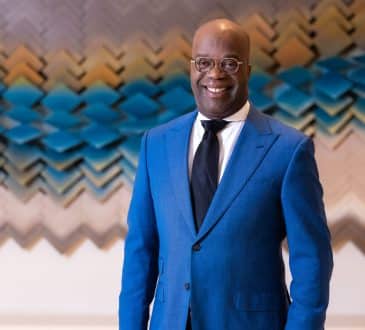We Need to Stop Prioritizing Problem-Solving. Here’s Why.

The workday starts out orderly enough. You have your to-do list; you look at your calendar and know that with enough focus and coffee, you can check every box. Once that first wave of emails begins to trickle into your inbox, however, you find yourself abandoning that neat to-do list and darting around the office to put out one small emergency after another. The next time you look up, it’s nearly five and you’ve scratched off just one or two of the blocks on your neglected notepad. Frustrated, you plant yourself in your office — resigned to working into the night yet again.
As counterintuitive as it might seem, it is possible to work hard all day and accomplish little of what needed to get done. A lack of achievement can be frustrating, leaving workers at all organizational levels feeling as though they somehow aren’t working hard enough, despite running themselves ragged each day. Executives, for their part, might find it tempting to blame the subpar performance on their employees’ poor time management skills, reasoning that workers could have accomplished more if they were more organized.
Is this attitude fair, though? The problem at hand doesn’t fall neatly into the time management box. Employees like those described above aren’t whiling away the workday on social media, but setting their planned tasks on the back burner as they handle the unexpected ones. The distraction from work isn’t chatter or app games or texting, but the work itself. In an office with a poor focus culture, employees are like goldfish in a fishbowl: darting frantically to each new task as it comes into view. Luckily, however, concentration can be restored to even the worst “fishbowl” cultures if executives, teams, and individuals establish basic strategies and organizational strategies to handle distractions as they arise.
Create Realistic Response Strategies
With the increasing integration of email, texting, and teleconferencing, it’s easier than ever to stay hooked into work-related communications. Unfortunately, that access also opens the door to a significant channel of distraction: when we see an email, we can’t help but open and read it. The next logical step is to solve whatever problem the message touches on and respond — thus taking up time that might have otherwise been spent on a planned project. This handle-it-now culture paints trivial and emergency emails with the same implied urgency and inculcates an unhealthy degree of vigilance and distraction. As corporate productivity researcher Maura Thomas notes in a Harvard Business Review article on time management: “Knowledge workers are so overwhelmed by incoming information, they spend much of their time ‘playing defense,’ operating without a clear picture of their total responsibilities.”
This defensive approach to daily work poses a real barrier to achievement. According to one study conducted by researchers at Microsoft, inopportune interruptions dramatically extend the time it takes to complete a task. In a full quarter of studied instances, researchers found that interrupted employees didn’t resume their original assignments for two or more hours and that workers often switched between tasks even after recovering from an interruption. Worse, habitual multitasking has a proven negative correlation with focus, attention, and work quality — so the strategies that workers adopt to handle the excess workflow only worsens their productivity.
Organizations and individuals alike need to control the flood of information and prioritize their communications. If phones, emails, instant messages, and texts all carry the same weight, workers will inevitably fall into distracting patterns of vigilance that will prevent them from being able to step back from problems that aren’t time-sensitive. Employees and executives alike need to have a shared understanding of which channels should be used for emergent issues and which should be reserved for nonessential communications. Most importantly of all, there should be no widespread expectation of an immediate response; after all, if an employee is constantly hooked into their email, how can they possibly be expected to maintain their focus long enough to complete tasks outside of it?
Establish a Workflow Method
Tracking is everything when it comes to workplace efficiency. To-do lists are all well and good, but they fall far shorter than they should when it comes to recording a worker’s actual accomplishments. A manager who flits around the office solving team-related problems as they arise won’t have the spare time to complete the employee development plan he had on his calendar for the day. When the end of the workday rolls around, he might look at his unchecked to-do list and feel as though he accomplished very little — despite being mentally exhausted from his frenetic problem-solving.
An effective office has a workflow methodology in place. Team members know what their workload entails, when their deadlines are, and to whom they should deliver finished tasks. Leaders, for their part, can delegate effectively and know when to leave day-to-day problems to their subordinates. As someone who currently oversees over sixty businesses, I fully understand that I would be overwhelmed and ineffective if I tried to be overly hands-on and solve every problem by myself. When implemented well, workflow methodologies help overtaxed employees regain control over their workload by providing them with a tangible and centralized way to organize even unexpected tasks into feasibility.
Allow for Breaks
Taking time off might seem like an odd solution to a productivity problem, but it truly does work. Like any other part of the body, the brain tires after strenuous activity — yet, while we wouldn’t begrudge ourselves a day to recover from a marathon, many high-achievers have trouble giving their mind a chance to rebound from a twelve-hour workday. Moreover, workers who suffer from mental fatigue often aren’t as creative, productive, or focused as those who come into the office mentally refreshed.
That said, while it’s all well and good to encourage employees to take breaks and go on periodic vacations, managers and executives might not see results unless they lead by example. The myth that more work naturally equals more success is a pervasive one; according to recent research, over 55% of American employees have unused vacation days. If employees feel as though their supervisors would look down on them for taking a long weekend or leaving early now and again, they won’t take that time off to recoup.
A “fishbowl” culture is characterized by panic. Employees want to get as much done as they can, so they throw themselves into answering every email, solving every problem, and staying far later than they should to pick up the scattered pieces of their workload. But in the long run, this emergency-centered mindset will only erode focus and lessen overall productivity. To break the fishbowl and restore focus to the office culture, executives and employees alike will need to step back, reorganize, and take a more structured and human-centered approach to managing the chaos inherent in everyday working life.
Written by: Rick DeStefane is a Missouri-based serial entrepreneur in the health services sector.
Add CEOWORLD magazine to your Google News feed.
Follow CEOWORLD magazine headlines on: Google News, LinkedIn, Twitter, and Facebook.
This report/news/ranking/statistics has been prepared only for general guidance on matters of interest and does not constitute professional advice. You should not act upon the information contained in this publication without obtaining specific professional advice. No representation or warranty (express or implied) is given as to the accuracy or completeness of the information contained in this publication, and, to the extent permitted by law, CEOWORLD magazine does not accept or assume any liability, responsibility or duty of care for any consequences of you or anyone else acting, or refraining to act, in reliance on the information contained in this publication or for any decision based on it.
Copyright 2024 The CEOWORLD magazine. All rights reserved. This material (and any extract from it) must not be copied, redistributed or placed on any website, without CEOWORLD magazine' prior written consent. For media queries, please contact: info@ceoworld.biz
SUBSCRIBE NEWSLETTER











